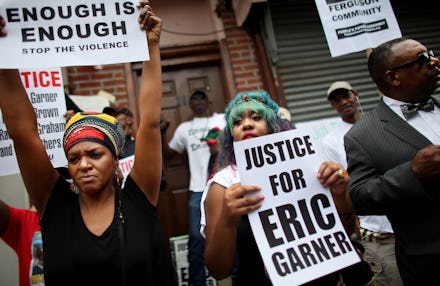One Chart Shows Why There Was Never Going to Be Justice for Eric Garner

The news: A Staten Island, New York, grand jury declined to indict Officer Daniel Pantaleo for causing the death of Eric Garner, an unarmed black man, with an illegal chokehold in July.
While many are understandably outraged over the decision — that a police officer was caught on camera using an authorized police tactic in what one New York medical investigator dubbed a homicide — there's no reason to be surprised.
As FiveThirtyEight reported, police officers rarely face legal consequences for breaking the law:
Only 33% of police officers facing felony charges are convicted, as opposed to 68% of civilians. Most of the 33% who are convicted don't even face jail time.
This isn't because police officers are innocent paragons of virtue, but because the system is inherently biased in favor of law enforcement.
David Rudovsky, a civil rights lawyer and co-author of Prosecuting Misconduct: Law and Litigation, told Vox that juries have "a tendency to believe a police officer over a civilian, in terms of credibility." This ultimately results in situations where prosecutors cannot convince the jury the officer's behavior was excessive because, after all, there could have been a reasonable doubt and his life could have been in danger.
Of course, the issues of police brutality and racism ingrained in the American justice system are far more complicated than one chart can summarize, as the Guardian's Katherine Krueger noted:
Still, the chart does capture an important aspect of the problem: Police can get away with crimes normal people can't. And this is why, despite what seemed to be a preponderance of evidence, there was never going to be justice for Eric Garner.
h/t FiveThirtyEight